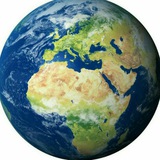Planet Earth
12 декабря 2022 08:00
Elk are a vital part of Banff’s ecology - they are the main herbivore, or plant eater, in the park and in turn a major food source for predators such as wolves. When Banff National Park was created in 1885, only a few elk were seen in the Bow Valley. By 1906, numbers of elk were so low they seemed to have disappeared. But ten years later, elk populations were up naturally, as well as with additional help from the introduction of 235 elk from Yellowstone National Park in Wyoming in 1918-20. Today, elk are the most numerous large animal with close to 350 found in the park; over 200 of them live in the lower Bow Valley close to the town of Banff. 🦌
📍Banff National Park, Alberta, Canada 🇨🇦
📸 harrycollinsphotography
Читать полностью…
Planet Earth
11 декабря 2022 14:00
📍Castagneto di Terelle, Italy 🇮🇹
📸 trelle.antonio
Читать полностью…
Planet Earth
10 декабря 2022 20:00
📸 Jingyi Zhang & Wang Zheng
Читать полностью…
Planet Earth
10 декабря 2022 08:00
📸 inthesemountains
Читать полностью…
Planet Earth
09 декабря 2022 08:00
📸 dolphindronedom
Читать полностью…
Planet Earth
07 декабря 2022 14:00
Did you know? 🤓
Whirlpools are columns of dust that rise from the ground by spinning. They can extend hundreds of metres above the ground and even move from place to place over short distances. Dimensions, such as height and width, vary according to region and temperature.
The main factor for the formation of the phenomenon of nature is very high air and soil temperature, which is conducive to the occurrence amidst the fire of burning as well.
The width of dust swirls, in general, reaches tens of meters. Some of them can be really dense, accumulating a lot of dust that restricts the visibility in the place where it is occurring. Others are shallow and allow even a view inside the dust column. 🌪
📍New York, USA 🇺🇸
📸 geologando_
Читать полностью…
Planet Earth
06 декабря 2022 08:00
📍Canada 🇨🇦
📸 niki.tercelj
Читать полностью…
Planet Earth
05 декабря 2022 08:00
Views from the 88th floor penthouse on Billionaires Row 🏙
📍New York, USA 🇺🇸
📸 dronehubmedia
Читать полностью…
Planet Earth
04 декабря 2022 14:00
📍Khorramabad, Iran 🇮🇷
📸 fahiminia">Mojtaba Fahiminia
Читать полностью…
Planet Earth
03 декабря 2022 20:00
📍Lake of Carezza, Carezza, Nova Levante, Italy 🇮🇹
📸 aleviaro">Alessandro Viaro
Читать полностью…
Planet Earth
03 декабря 2022 08:00
📍Rome, Italy 🇮🇹
📸 parrot_official
Читать полностью…
Planet Earth
02 декабря 2022 20:00
📍Ararat Province, Armenia 🇦🇲
📸 popovkin">Alexander Popovkin
Читать полностью…
Planet Earth
01 декабря 2022 20:00
📍Keflavík, Suðurnes, Iceland 🇮🇸
📸 Giampiero Resta
Читать полностью…
Planet Earth
01 декабря 2022 08:00
📍Canada 🇨🇦
📸 tati_yyc
Читать полностью…
Planet Earth
30 ноября 2022 14:00
Did you know? 🤓
Giraffes can't cough 🦒
Читать полностью…

 23951
23951